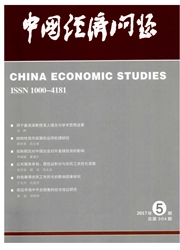

 中文摘要:
中文摘要:
本文实证研究中国劳动力跨省流动是否受到各省之间行政边界的负面影响。通过分析代表性居民的就业区位选择,本文建立劳动力流动的实证模型,并采用31个省2002—2013年面板数据,发现省际边界虚拟变量的估计系数显著为负,证明中国劳动力流动存在省际边界壁垒。该壁垒导致全国2013年跨省劳动力总流动潜在减少27.74%至43.84%。同时。劳动力流动收入增加能显著促进劳动力流动,而就业机会部分影响劳动力流动。本文还分别利用务工与服务,务工、服务与经商,务工、服务与务农动机的暂住证数据替代所有动机的暂住证数据。结果证明上述结论具有很好的稳健性。
 英文摘要:
英文摘要:
This paper studies whether the cross-province labor flow is negatively impacted by the administrative borders among provinces empirically. By analyzing the employment location choice of representative resident, this paper builds an empirical model of the flow of labor, and uses the panel data of 31 provinces in 2002-2013, then finds the estimated coefficient of provincial border dummy variable is significantly negative, and proves the existence of provincial boundary barrier for Chinese labor flow, which leads to a potential reduction of cross-province labor flow between 27.73% and 43.84% in 2013. Mean- while, the increase of income significantly promotes the labor flow, while the employment opportunity partially affects the labor flow. This paper also uses the data of temporary residence permit in the fields of manufacturing and service, in the fields of manufacturing, service and commerce, in the fields of manufacturing, service and agriculture to substitute the data in all fields, and the results confirm the robustness of the above conclusions.
 同期刊论文项目
同期刊论文项目
 同项目期刊论文
同项目期刊论文
 期刊信息
期刊信息
